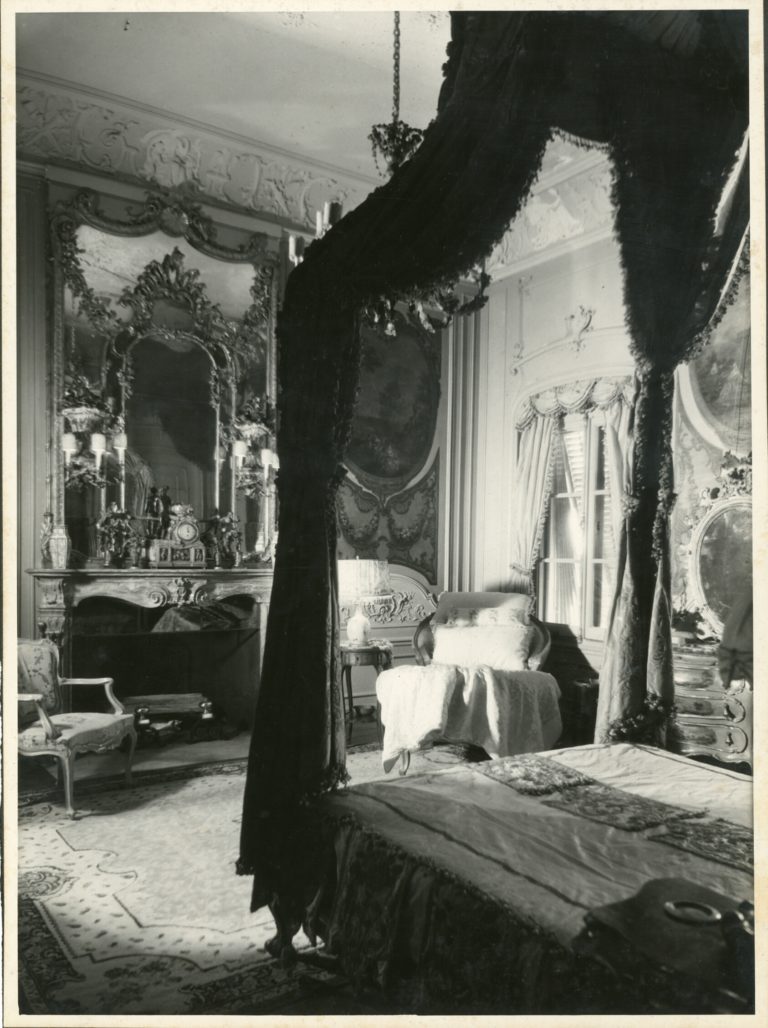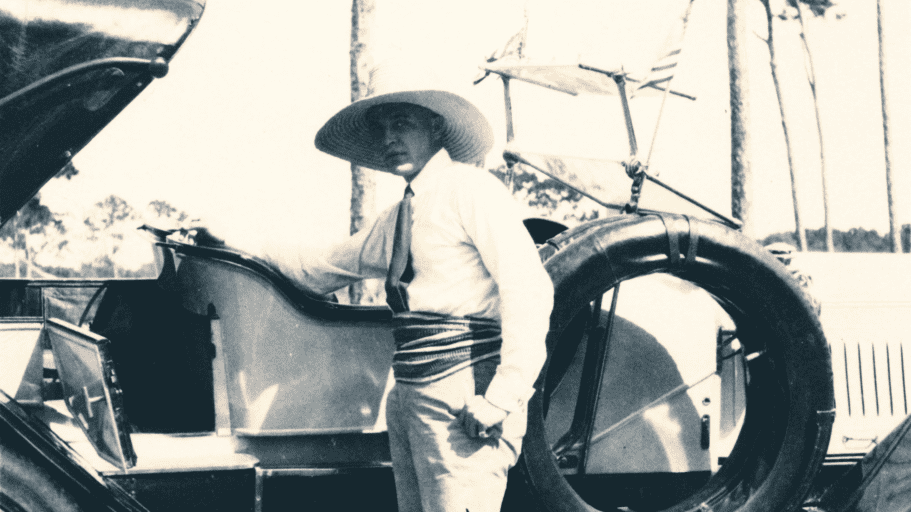


James Deering built Vizcaya as his winter home between 1914 and 1916, a time when America was emerging as an international economic and cultural force.
By adapting European design traditions to a Miami context, Deering showed that America could compete with Europe, not only financially, but also culturally. In 1910 Deering hired Paul Chalfin (1874–1959) to advise on the creation of Vizcaya. Chalfin was involved in all aspects of Vizcaya’s design and is considered the artistic mastermind behind its creation.
Deering and his designers followed a practice common for the wealthy of this era, by decorating rooms in historic styles.
Welcoming Guests to Vizcaya
Vizcaya has nine guest bedrooms and each one is designed differently. In that era, guests would stay on for weeks.
Chalfin insisted on giving all the guest bedrooms whimsical names. Some of the room names are inspired by people, others are inspired by design styles. The room names romanticize the estate though Deering appears to have been frustrated with the obscure names and wrote in a 1916 telegram,
“’Espagnolette, Pantaloon, Lady Hamilton, Goyesca and Manin’ I should never have chosen, and am sorry that we are not together to discuss the matter….I suppose it will always be possible in future to come to another decision….”
Let’s explore the many rooms in Vizcaya’s Main House, their names and design.
Belgioioso
Paul Chalfin named this remote and lofty tower bedroom in honor of the Countess of Belgioioso, a prominent public figure in early 1800s Milan.
As Chalfin explained to his client, James Deering: “It is because this room is furnished in the manner prevalent during the period of her prestige that it has been called after her.”

Cathay
Chalfin designed this guest bedroom in a style known as “Chinoiserie.” While most of Vizcaya is about the adaptation of European traditions to an American context, Chinoiserie was based on the adaptation of Chinese art by Europeans. Chalfin called the room “Cathay” after the name given to China by the explorer Marco Polo.

Galleon and Caravel
These two rooms form a suite that offered Vizcaya’s most gracious guest accommodations with wide views of Biscayne Bay and the formal gardens.
The galleon and the caravel were types of ships used by Spain to explore the Americas. The caravel is an important symbol at Vizcaya and establishes a link between “Old World” Europe and “New World” Miami. The galleon, a larger and statelier ship, was used by Paul Chalfin for the lavish salon. Together, the rooms reference the myth favored by James Deering that Vizcaya was named after an explorer.




Espagnolette
The name Espagnolette was chosen to recall a mode of Spanish dress. The style was popularized in France through the work of artist Jean-Antoine Watteau (1684–1721), whose fantasy garden paintings inspired the décor of this room.


Lady Hamilton
“My bed was Lady Hamilton’s—one of the most beautiful I ever saw. I wish you could see the view from my window over the water. An enormous pavilion is being completed out …of stone, in the shape of a great ship.”
–Corinne Melchers, Guest of Deering, 1923.
This bedroom with breathtaking views of Biscayne Bay was was named after Lady Emma Hamilton (1765–1815), an English woman married to the British ambassador to Naples. Paul Chalfin told James Deering that the bed was “said to have belonged to Lady Hamilton” and the objects scattered throughout the room “would have met with favor of this distinguished beauty.”

Giudecca
“The water reflects upwards to the ceiling and the sound of waves is audible in this room, precisely as upon the quay of this great canal of Venice.”
–Paul Chalfin, Vizcaya’s artistic director
This room evoked the Venetian island of Giudecca for Chalfin. Guests of this bedroom could gaze out the window at Venetian-style bridges and dream of the faraway city. One such occupant may have been head housekeeper, Ethel Syer; letters suggest she stayed here for about a month.

Goyesca
“The decorations of this room are said to have come from Spain and are such as the patronesses of Goya would have enjoyed.”
–Paul Chalfin, Vizcaya’s artistic director
Goya (Francisco Jose de Goya y Lucientes, 1746-1828) was a romantic Spanish painter. Chalfin’s account of the room is fanciful, as the wall panels belong to the same set as those in the Enclosed Loggia downstairs and are actually Italian. This “mistake” reveals how patrons and designers of the time were often more interested in conjuring a mood than achieving accuracy.

Pantaloon
Chalfin named this room after a buffoonish character of Italian popular theater, the Venetian merchant Pantaloon. This reference demonstrates both Chalfin’s sense of humor as well as his admiration for Venice.

Manin
This spacious room honors the last leader, or “doge,” of Venice, Ludovico Manin, who ruled until 1797. It is furnished in a style of simplicity and functionality, known as “Biedermeier.”


COME EXPLORE OTHER BEAUTIFUL SPACES IN PERSON
PLANNING YOUR VISIT TODAY!







